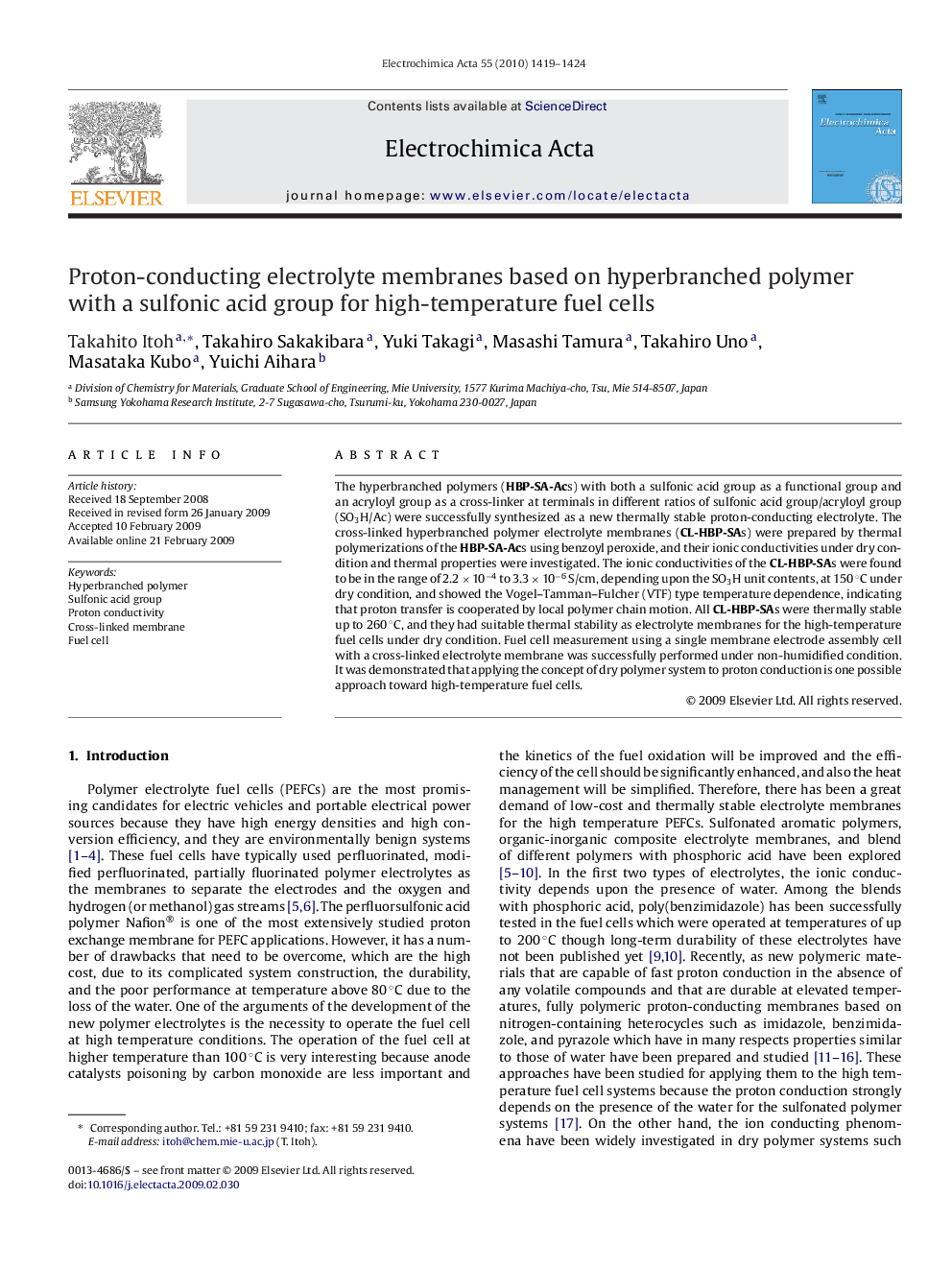| Article ID | Journal | Published Year | Pages | File Type |
|---|---|---|---|---|
| 192388 | Electrochimica Acta | 2010 | 6 Pages |
The hyperbranched polymers (HBP-SA-Acs) with both a sulfonic acid group as a functional group and an acryloyl group as a cross-linker at terminals in different ratios of sulfonic acid group/acryloyl group (SO3H/Ac) were successfully synthesized as a new thermally stable proton-conducting electrolyte. The cross-linked hyperbranched polymer electrolyte membranes (CL-HBP-SAs) were prepared by thermal polymerizations of the HBP-SA-Acs using benzoyl peroxide, and their ionic conductivities under dry condition and thermal properties were investigated. The ionic conductivities of the CL-HBP-SAs were found to be in the range of 2.2 × 10−4 to 3.3 × 10−6 S/cm, depending upon the SO3H unit contents, at 150 °C under dry condition, and showed the Vogel–Tamman–Fulcher (VTF) type temperature dependence, indicating that proton transfer is cooperated by local polymer chain motion. All CL-HBP-SAs were thermally stable up to 260 °C, and they had suitable thermal stability as electrolyte membranes for the high-temperature fuel cells under dry condition. Fuel cell measurement using a single membrane electrode assembly cell with a cross-linked electrolyte membrane was successfully performed under non-humidified condition. It was demonstrated that applying the concept of dry polymer system to proton conduction is one possible approach toward high-temperature fuel cells.
